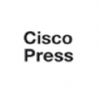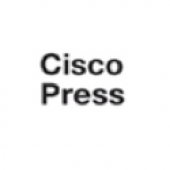Cisco NX-OS: Facts & FeaturesCisco NX-OS: Facts & Features
Learn the basics of NS-OX in this book excerpt on Cisco's operating system for Nexus data center switching.
July 17, 2014

If you're in the market for Cisco Nexus switches or already supporting Nexus in your data center environment, you'll need to get up to speed on the networking operating system NX-OS.
This chapter, Introduction to Cisco NX-OS, from the book NX-OS and Cisco Nexus Switching by Ron Fuller, David Jansen, and Matthew McPherson, provides an introduction and overview of NX-OS and a comparison between traditional IOS and NX-OS configurations and terminology. It also covers NX-OS user modes, management interfaces, and system file management.
NX-OS overview
Cisco built the next-generation data center class operating system designed for maximum scalability and application availability. The NX-OS data center class operating system was built with modularity, resiliency, and serviceability at its foundation. NX-OS is based on the industry-proven Cisco Storage Area Network Operating System (SAN-OS) Software and helps ensure continuous availability to set the standard for mission-critical data center environments.
 The self-healing and highly modular design of Cisco NX-OS enables for operational excellence, increasing the service levels and enabling exceptional operational flexibility. Several advantages of Cisco NX-OS include the following:
The self-healing and highly modular design of Cisco NX-OS enables for operational excellence, increasing the service levels and enabling exceptional operational flexibility. Several advantages of Cisco NX-OS include the following:
Unified data center operating system
Robust and rich feature set with a variety of Cisco innovations
Flexibility and scalability
Modularity
Virtualization
Resiliency
IPv4 and IPv6 IP routing and multicast features
Comprehensive security, availability, serviceability, and management features
Key features and benefits
Virtual device contexts (VDCs): Cisco Nexus 7000 Series switches can be segmented into virtual devices based on customer requirements. VDCs offer several benefits such as fault isolation, administration plane, separation of data traffic, and enhanced security.
Virtual Port Channels (vPCs): Enables a server or switch to use an EtherChannel across two upstream switches without an STP-blocked port to enable use of all available uplink bandwidth.
Continuous system operation: Maintenance, upgrades, and software certification can be performed without service interruptions because of the modular nature of NX-OS and features such as In-Service Software Upgrade (ISSU) and the capability for processes to restart dynamically.
Security: Cisco NX-OS provides outstanding data confidentiality and integrity, supporting standard IEEE 802.1AE link-layer cryptography with 128-bit Advanced Encryption Standard (AES) cryptography. In addition to CTS, there are many additional security features such as access control lists (ACLs) and port-security, for example.
Overlay Transport Virtualization (OTV): Enables the Layer 2 extension between distributed data centers over any transport Layer 3 network.
NX-OS Persistent Storage Service (PSS): The PSS is a lightweight database that maintains runtime information state. PSS provides reliable persistent storage to the software components to checkpoint their internal state and data structures enabling nondisruptive restart. If a fault occurs in a process (such as OSPF), the NX-OS high availability (HA) manager determines best recovery action:
Restart a process.
Switch over to a redundant supervisor module.
FabricPath: Enables each device to build an overall view of the topology; this is similar to other link state routing protocols. Each device in the FabricPath topology is identified by a switch-id. The Layer 2 forwarding tables are built based on reachability to each switch-id, not by the MAC address. Eliminates spanning-tree to maximize network bandwidth and flexibility in topological configurations, as well as simplify operational support and configuration. This enables a tremendous amount of flexibility on the topology because you can now build FabricPath topologies for Layer 2-based networks the same as for Layer 3-based networks.
>> For more on NX-OS, read the full chapter here.
>> Then see our book review or buy the book at the Cisco Press store. Network Computing members can use code NWC2014 for 35% off through December 31, 2014.
About the Author
You May Also Like




